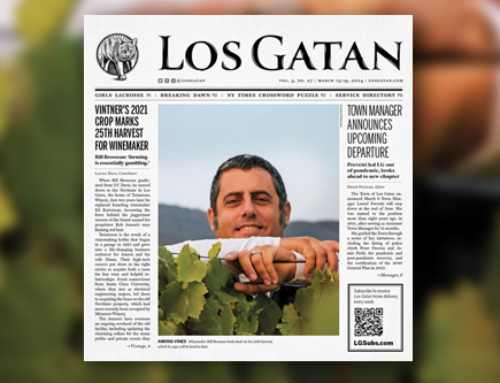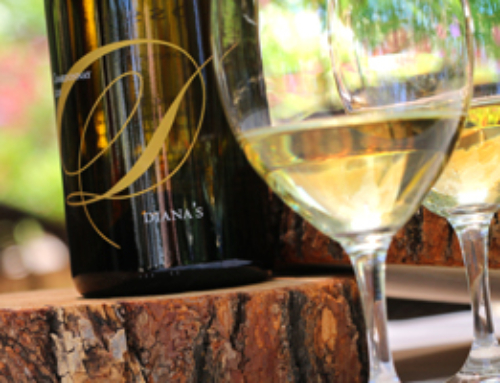By Laura Ness, Correspondent |

Instead of doing the annual Blessing of the Grapes on the first day of harvest as is traditional, this year, Testarossa Winery held the ceremony, presided over by two Jesuit priests, on the day the last of the grapes came in.
“We wanted to hold the blessing in late August when the first grapes came in, but the Delta variant was prevalent and we didn’t want to put anyone at risk,” said Testarossa co-owner Rob Jensen at the Oct. 19 ceremony.
Instead, winemaker Bill Brosseau suggested that they hold the blessing at the end of harvest. Given that last year fires ruined a sizable portion of the red wine grapes in the Santa Lucia Highlands, a prime source of the Los Gatos winery’s fruit, it seemed especially appropriate to be thankful for the bountiful and smoke-free harvest of 2021.
The 134th Blessing of the Harvest was held at the Novitiate property that Testarossa has occupied since 2000. Priests Tony Mancuso and Peter Pabst sprinkled holy water over a crushpad full of La Rinconada chardonnay. Pabst is the founder and chancellor of Cristo Rey San Jose Jesuit High School, and Mancuso is chaplain at St. Francis High School in Mountain View and pastor of St. Frances Cabrini Parish in San Jose.
Pabst recalled that 47 years ago, as a young Jesuit priest, he was harvesting grapes in the Santa Cruz Mountains to process at the Novitiate, built by the Jesuits in 1888 and operated ever since as the 107th bonded winery in the United States. Testarossa’s Wine Bar 107 honors this distinction.
“I understand what it takes to grow grapes and make wine,” Pabst said. “It is hard, but fulfilling work.”
Brosseau said it was fitting that La Rinconada was the blessed fruit this year, as it is Jensen’s favorite chardonnay clone. Originally brought to Livermore by the Wente family as cuttings from a vineyard in France in the 19th century, it adapted well to its new home and was widely propagated throughout California and the west, making it the dominant clone of the variety in the New World by far.
“I like to let this fruit hang as long as possible,” Brosseau said. “I was driving the vineyard crew down there a little crazy. We picked it just ahead of the rain.”
Jensen noted that the grapes exhibited a bit of botrytis, or noble rot, the bacteria that produces the flavors of Sauternes.
“We used to make this really great chardonnay in the 1990s,” he said. “As we got more equipment and began sorting out these berries, the wines seemed to lose some of their spice. So, we did an experiment. We pressed 5 tons that came in like this and sorted an additional 5 tons. We liked the unsorted wine better. Our CFO was happy, because it saved us in labor costs.”
 The blessing was followed by an al fresco lunch prepared by resident Chef Nadiv Geiger, accompanied by a sampling of the wines in Testarossa’s new Reserve Library Flight.
The blessing was followed by an al fresco lunch prepared by resident Chef Nadiv Geiger, accompanied by a sampling of the wines in Testarossa’s new Reserve Library Flight.





